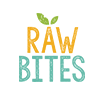
Baby Steps to Curb Your Sugar Addiction

Sugar is a legal addictive energy booster. Simply put, that's what it is.
It's sad because it starts when we are in our most innocent years, when we were given that first taste of anything sweet. No wonder so many parents have a hard time managing the amount of sweets and unhealthy snacks their kids crave.
Think about it: As a kid, were you the kind to ask your parents to buy you something sweet for pasalubong? Did you ever go into your mom's pantry to knick sweets or a packet of junk food when you weren't allowed to eat anymore? These and other habits like this are indicators of what could be a sugar addiction — one that you bring with you to adulthood. In fact, studies are saying that childhood addiction to sugar is actually a legit disorder that can lead to lifelong health and behavioral problems.
How to curb your sugar cravings at home
What's interesting is that you can actually reset your body's craving for sugar by some lifestyle adjustments. We're not going to mince words: Cutting back on sugar — even the good, natural, non-artificial versions — is damn hard. Remember, most of us have been wired to crave and depend on sugar, on sweet flavors. But if you want to do your body a favor and really prevent a host of potential diseases that are related in one way or another to sugar damage, then read on. You may be on to something that could save your life.

1. Gradually eliminate simple sugars and carbs from your grocery list and diet.
You know that white rice we all love? The fluffier, the better, right? Sad to say, our consumption of white rice actually raises the level of sugar in our bloodstream. And when our blood is too thick because of triglycerides, we are at risk for awful conditions like diabetes and heart disease.
Start by consuming light brown or pink rice, instead of white. These semi-polished variants of rice have a greater fiber content and will help you feel fuller, but are also not a drastic taste departure from your beloved white rice.
Also, that teaspoon (or 4) of sugar that you add to your coffee? Skip it. Yes, and the dairy, too. Dairy contains lactose, which is a type of sugar and causes our triglyceride levels to rise, and our stored fat to increase.
2. Start consuming more fiber, complex carbs and protein, as well as good fat.
OK, so given that you've eliminated some of the obvious, visible sugars from your pantry and food choices, it's time to address the aspect of our brains and bodies that tell us to look for sugar. The best way to downplay our cravings for a cupcake or an iced caramel latte is to get into the habit of feeling full on the RIGHT foods.
You can satisfy your sweet cravings by reaching for fruits. Try a fruit and protein smoothie, for instance. This can be made once a day with your daily recommended intake of fruits, some plain Greek yogurt, and some kind of superfood protein, like seeds or oats.
Whole grains and nuts are also your friends. Craving for a peanut butter and jelly sandwich? Reach for some gluten-free bread, slap on a tablespoon or two (not more!) of a natural, additive-free peanut butter (like Pics' Peanut Butter, for example), and then crush some blueberries with a teaspoon of raw honey. You have a healthier, hardier version of a classic crave-worthy snack.
3. Snack at least 3-4 hours after your last meal.
Provided you eat a high protein, high fiber breakfast or lunch, you should feel full for around 3 to 4 hours before you start getting hungry. If you do get hungry, again, resist the urge to buy a bag of chips or fast food. Have some filling, low-calorie, good-fat-filled foods within your reach. A trail mix with mostly nuts and grains (and just 1/4 the amount of dried fruit) is a great way to feel full and meet the need for a quick crunchy snack.
Sugar withdrawal will not be easy. You might experience mood swings, sometimes a headache two to three days into cutting the sugar from your diet. It's normal! Your body will adjust to the lessened presence of this addictive stimulant and will eventually get used to having less and less of it. You'll see some of your food choices change, and what may have tempted you in the past (hello, cupcakes, cheesecakes) may not appeal to you as much anymore.
And, if you do have sweet cravings, we suggest reaching only for small, portioned doses — like the options in our Raw Bites Box. Have you subscribed to yours today?

Leave a comment